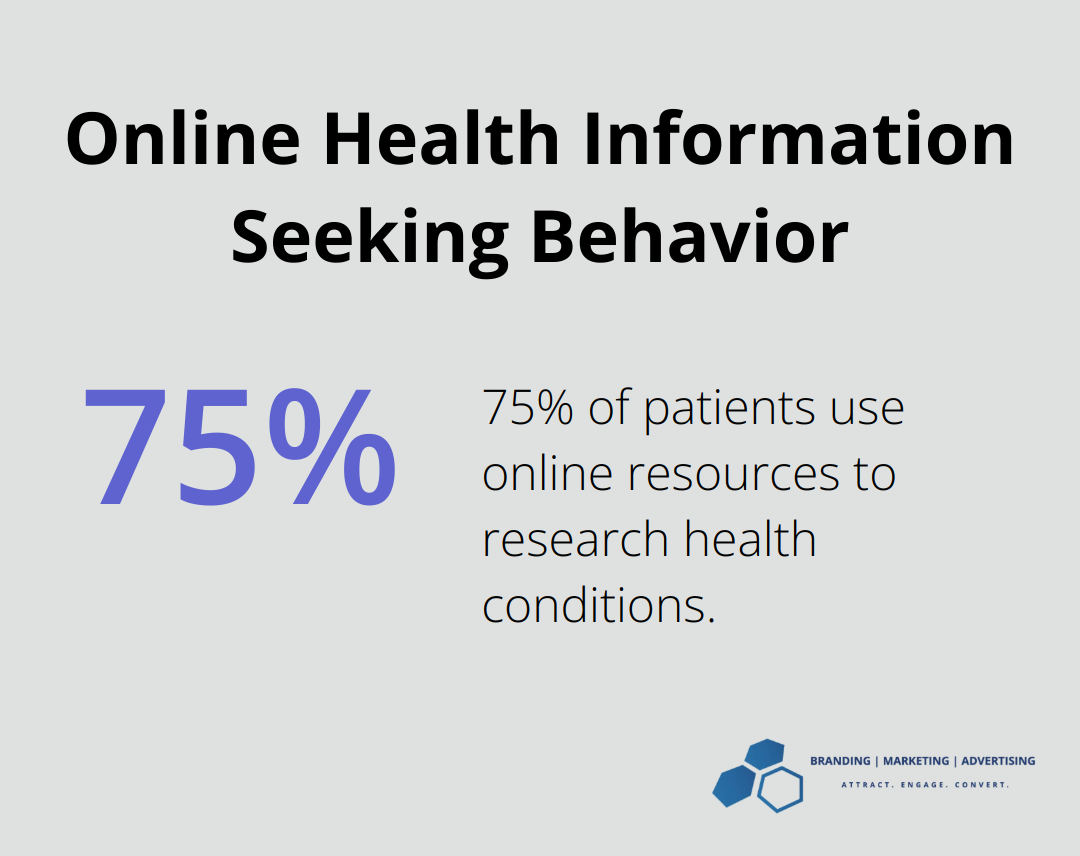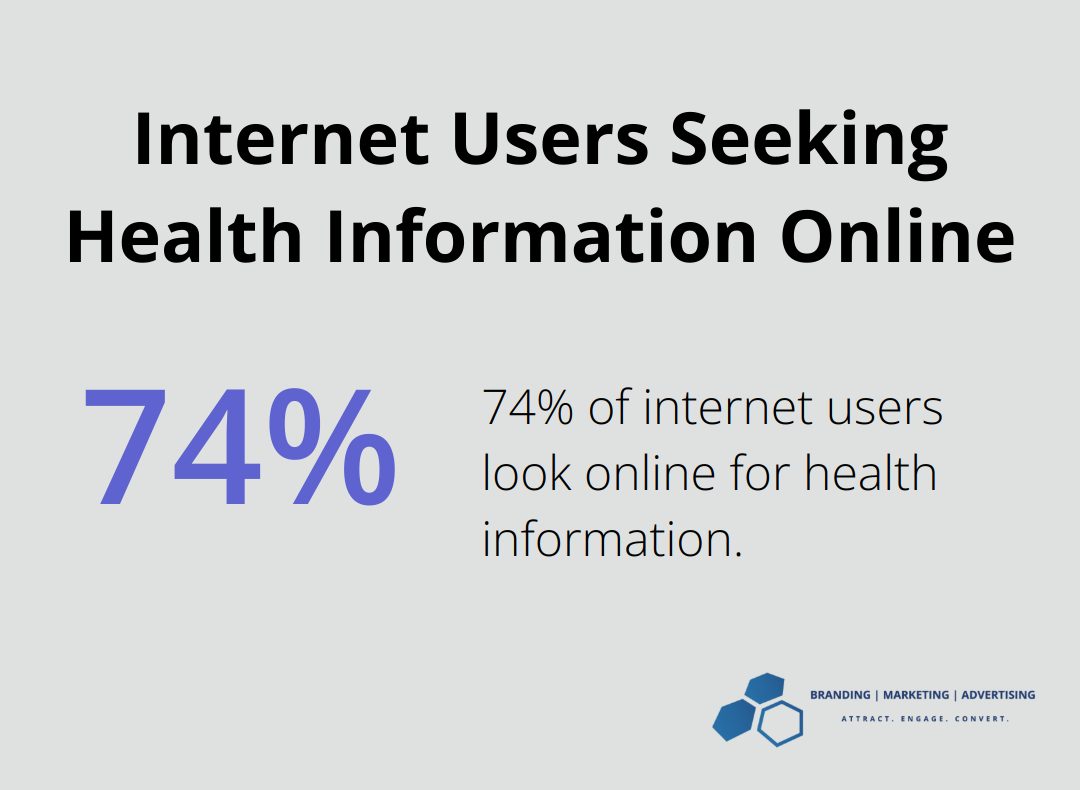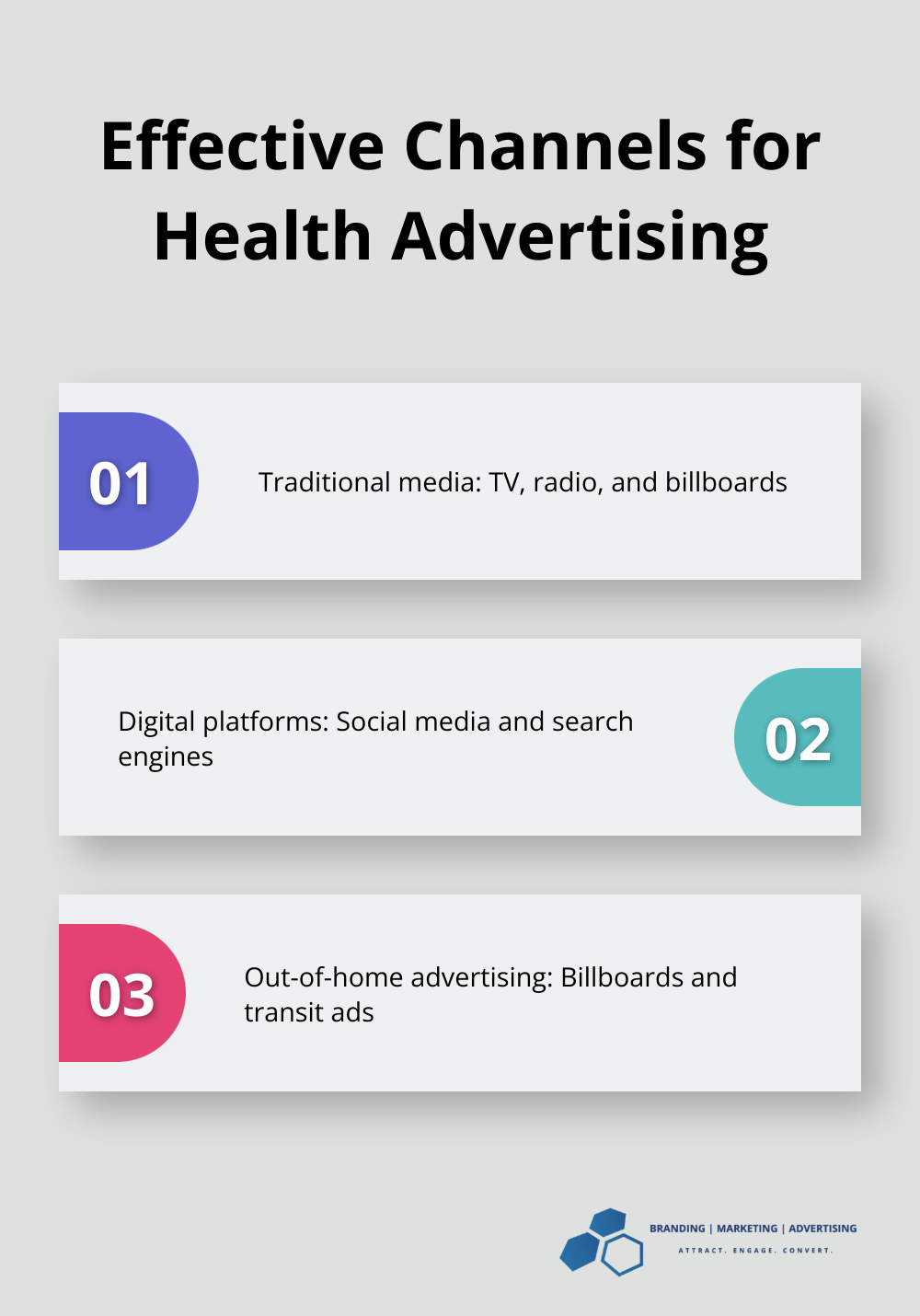How to Create Effective Health Advertising Campaigns
At Branding | Marketing | Advertising, we know that creating effective health advertising campaigns is a complex but rewarding challenge.
In today’s competitive landscape, advertising health ads requires a deep understanding of your target audience and a strategic approach to messaging and channel selection.
This blog post will guide you through the essential steps to develop impactful health campaigns that resonate with your audience and drive meaningful results.
Who Are Your Health Ad Viewers
Understanding your target audience forms the foundation of any successful health advertising campaign. This step proves essential for creating impactful health messages that resonate with viewers.
Market Research: More Than Just Data
Market research uncovers insights that drive action. Analyze existing customer data, conduct surveys, and organize focus groups. A study by the Healthcare Information and Management Systems Society (HIMSS) reveals that 75% of patients use online resources to research health conditions. This statistic underscores the importance of understanding where your audience seeks information.

Paint a Detailed Picture of Your Audience
Demographics serve as a starting point. Explore psychographics to understand your audience’s values, attitudes, and lifestyle choices. For example, a campaign targeting millennials might focus on preventive care and wellness, while one for baby boomers might emphasize managing chronic conditions. Create detailed personas that represent your ideal viewers.
Uncover Health Motivations
What health concerns keep your audience awake at night? What are their health goals? Social factors have been increasingly recognized as important, and in some cases dominant, determinants of health outcomes. This understanding presents an opportunity for your advertising to make a difference. Identify the specific health concerns and motivations of your audience to craft messages that truly resonate.
Leverage Data-Driven Insights
Use analytics tools to gather data on your audience’s online behavior. This information helps you understand their preferences, search patterns, and content consumption habits. (Google Analytics, for instance, provides valuable insights into website traffic and user engagement.)
Conduct Competitor Analysis
Study your competitors’ health advertising campaigns. Identify what works well and what doesn’t. This analysis helps you differentiate your campaign and address any gaps in the market. Tools like SEMrush or Ahrefs can provide competitive intelligence on your rivals’ digital strategies.
Effective health advertising targets the right people with the right message. Invest time in understanding your audience to set the foundation for a campaign that captures attention and drives meaningful health outcomes. With a clear picture of your target viewers, you’re ready to craft compelling health messages that speak directly to their needs and motivations.
How to Craft Health Messages That Resonate
At Branding | Marketing | Advertising, we understand that crafting compelling health messages requires a delicate balance of information and emotion. This chapter explores strategies to create health messages that truly connect with your audience.
Speak Their Language
Clear communication forms the foundation of effective health messaging. Medical jargon can alienate your audience, so we recommend using simple, accessible language. Health literacy is an important factor to consider when crafting health messages. This underscores the need for messages that a wide range of people can understand.
For example:
- Instead of “myocardial infarction,” use “heart attack”
- Rather than “hypertension,” say “high blood pressure”
This approach ensures your message reaches and resonates with more people.
Tell a Story
Humans respond to narratives. Research suggests that stories can have a positive impact on knowledge retention compared to other forms of communication. We suggest leveraging this in your health advertising.
Share patient testimonials or case studies that illustrate the impact of a health intervention. A campaign for a diabetes management program could feature John’s story, who lowered his A1C levels and now enjoys playing with his grandchildren without fatigue.
Focus on Benefits
People respond more positively to messages that highlight gains rather than losses. The Journal of Marketing Research found that gain-framed messages (focusing on benefits) prove more effective in promoting prevention behaviors than loss-framed messages.
Try this approach:
- Instead of “Smoking kills,” use “Quitting smoking gives you more energy and saves you money”
This positive framing motivates action by highlighting the tangible benefits of healthy choices.
Back It Up
While emotional appeal plays a crucial role, don’t overlook the power of credible information. The Pew Research Center reports that 74% of internet users look online for health information. Provide them with reliable data to support your message.

Include statistics from reputable sources (like the Centers for Disease Control and Prevention or the World Health Organization). For instance: “Regular exercise can reduce your risk of heart disease by up to 35%, according to the American Heart Association.”
The combination of clear language, compelling stories, benefit-focused messaging, and credible data creates health advertising that not only informs but also inspires action. The ultimate goal is to empower your audience to make positive health decisions.
Now that we’ve explored how to craft resonant health messages, let’s examine the various channels available for delivering these messages effectively.
Where Should You Advertise Health Campaigns
At Branding | Marketing | Advertising, we understand the importance of selecting the right channels for your health advertising campaign. The media landscape offers diverse options, each with unique advantages. Let’s explore how to leverage various platforms to maximize the impact of your health messages.
Traditional Media: A Powerful Tool
Traditional media remains a potent force for health advertising. Local advertising is set to grow 6.1% in 2025, proving the ongoing importance of TV, radio, and billboard media placements. Print media allows for in-depth health information, particularly valuable for reaching older adults who may be less active online.

Digital Platforms: The New Frontier
Digital advertising has transformed how we connect with health consumers. Social media platforms like Facebook and Instagram provide precise targeting options based on demographics, interests, and behaviors. A campaign promoting a new fitness app could target users interested in health and wellness within specific age groups.
Search engine marketing (SEM) proves powerful for health advertising. Your health ads can appear when people actively seek information through targeted keywords.
Mobile apps present unique opportunities for health advertising. Health and fitness apps offer a particularly relevant context for your messages.
Out-of-Home: Meeting People Where They Are
Out-of-home (OOH) advertising, including billboards and transit ads, can effectively deliver health campaigns. These formats work well for simple, impactful messages that people can absorb quickly. A smoking cessation campaign might use striking visuals on bus shelters to grab attention.
Digital out-of-home (DOOH) advertising takes this further, allowing for dynamic content updates in real-time. With programmatic DOOH, advertisers can quickly swap creatives, adjust targeting, and scale campaigns up or down as needed based on changes to inventory and other factors.
The Power of Integration
While each channel has strengths, the most effective health advertising campaigns leverage multiple platforms. This integrated approach ensures your message reaches your audience through various touchpoints, reinforcing your message and increasing the likelihood of action.
A heart health awareness campaign might combine TV ads for broad reach, targeted social media posts for engagement, and OOH advertising near hospitals or fitness centers for contextual relevance. This multi-channel strategy creates a cohesive brand experience and maximizes your campaign’s impact.
The key to successful channel selection lies in understanding where your target audience spends their time and how they prefer to consume information. Aligning your channel strategy with your audience’s habits and preferences will create health advertising campaigns that not only reach but resonate with your viewers.
Final Thoughts
Creating effective health advertising campaigns demands a strategic, audience-centric approach. We at Branding | Marketing | Advertising emphasize the importance of thorough market research and demographic analysis to understand your target audience. This knowledge enables you to craft compelling health messages that connect on both emotional and rational levels, using clear language, storytelling, and credible data to strengthen your message.
The selection of appropriate advertising channels plays a vital role in reaching your audience effectively. A multi-channel strategy that combines traditional media, digital platforms, and out-of-home advertising maximizes your campaign’s impact and reach. Continuous monitoring and optimization are essential for long-term success in the dynamic health advertising landscape.
Effective health advertising educates, inspires, and motivates people to make positive health decisions. At Branding | Marketing | Advertising, we help businesses develop impactful health advertising campaigns (our expertise in digital marketing, content creation, and advertising can help you craft resonant messages). Our partnership ensures your health advertising efforts are strategic, effective, and aligned with the latest industry best practices.












